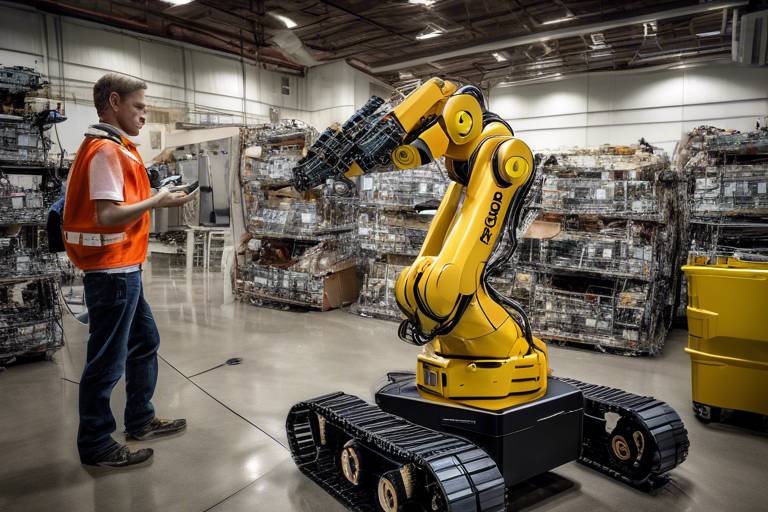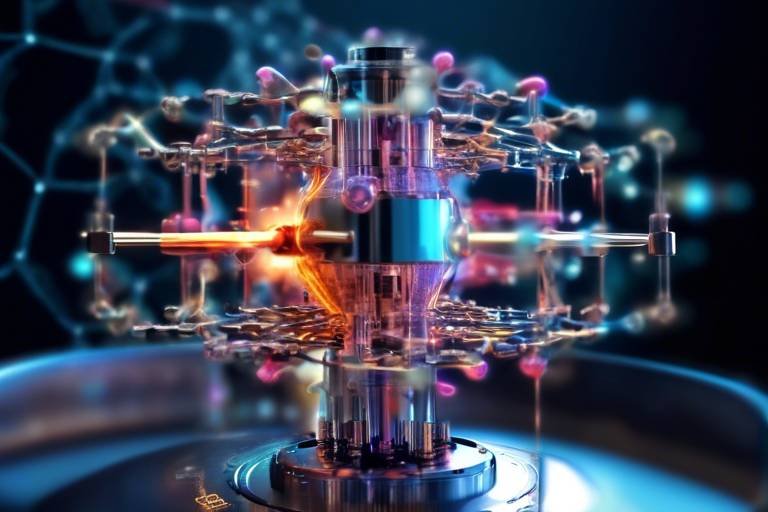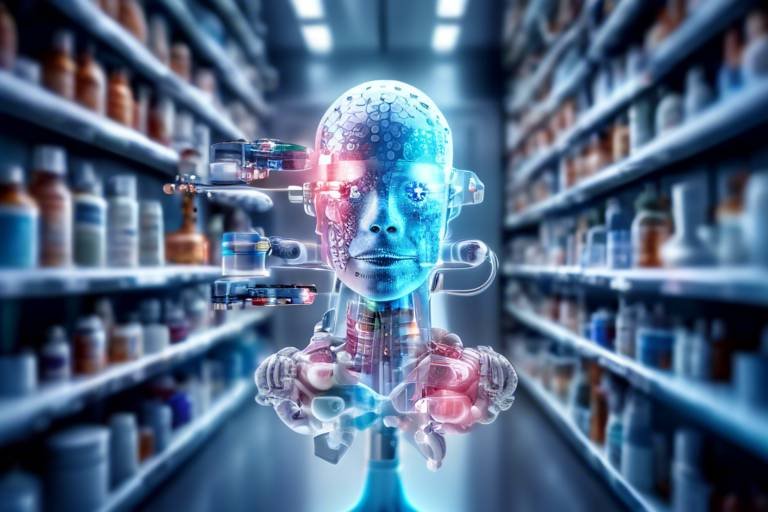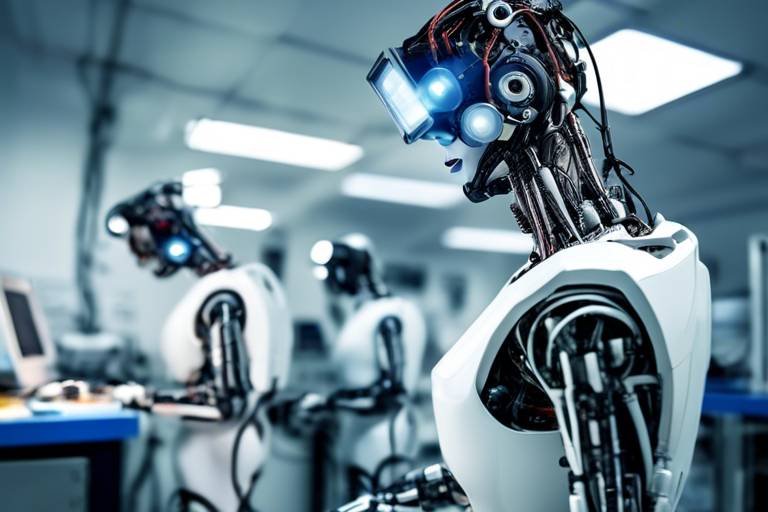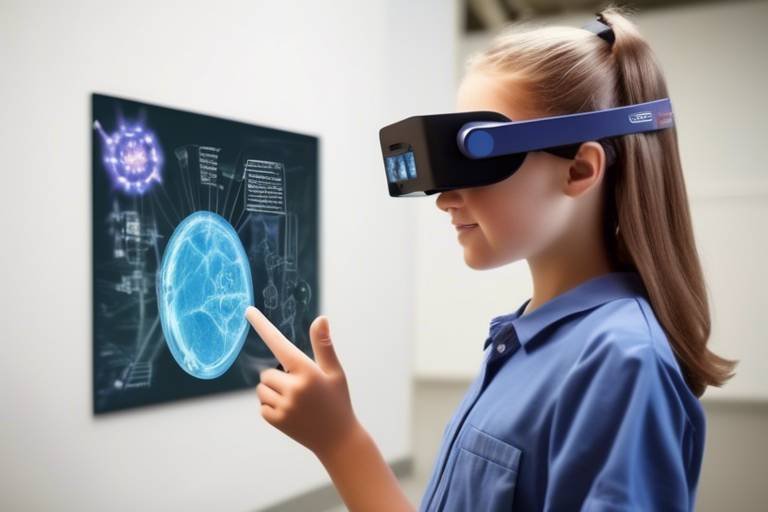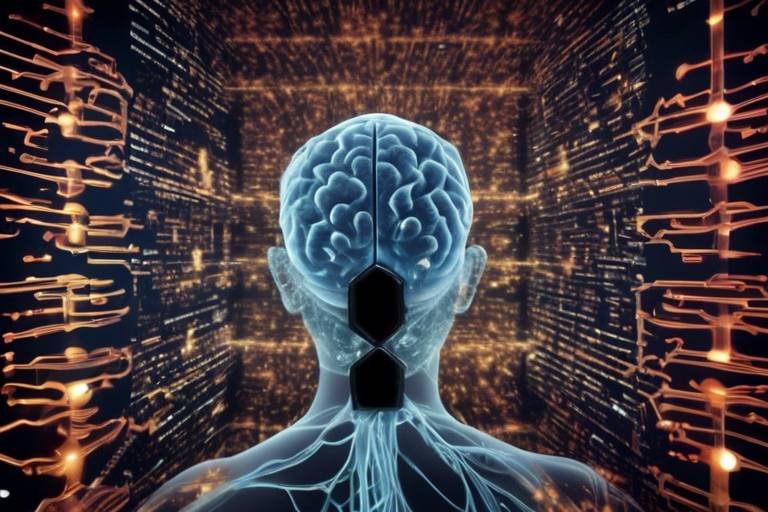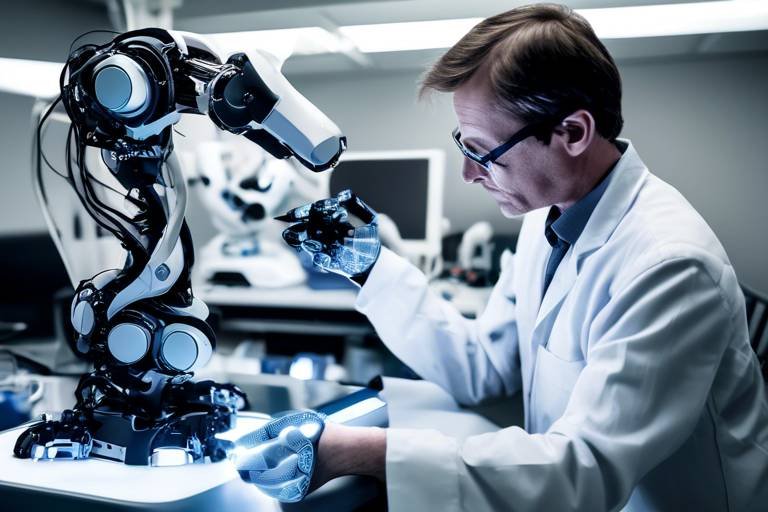How Robotics is Enhancing Disaster Preparedness
In a world where natural disasters seem to be occurring more frequently and with increasing intensity, the need for effective disaster preparedness has never been greater. Enter robotics—an innovative field that is transforming how we prepare for, respond to, and recover from disasters. Imagine a future where robots not only assist in saving lives but also help communities bounce back more quickly after a catastrophe. This article explores the innovative ways robotics is enhancing disaster preparedness, from improving response times to ensuring the safety of first responders and affected communities.
Robots are increasingly being integrated into emergency response teams, providing real-time data and support to enhance decision-making during disasters. These machines can operate in environments that are dangerous or inaccessible to humans, making them invaluable during crises. Whether it’s a devastating earthquake or a raging wildfire, the ability of robots to gather information and carry out tasks can significantly speed up the response efforts. Imagine a robot that can navigate through debris to locate trapped individuals or deliver supplies to those in need—this is not science fiction; it's happening now.
Various types of robots are utilized in disaster scenarios, including drones for aerial surveillance and ground robots for search and rescue missions. Each type serves a unique purpose and is designed to tackle specific challenges posed by different types of disasters. For instance, Unmanned Aerial Vehicles (UAVs), commonly known as drones, play a crucial role in surveying disaster-stricken areas, delivering supplies, and providing situational awareness to responders on the ground.
UAVs are equipped with high-resolution cameras and sensors that allow them to capture detailed images of affected areas. This capability is especially useful in the aftermath of natural disasters, where traditional methods of assessment can be time-consuming and dangerous. In addition, drones can cover vast areas quickly, providing critical information that helps emergency teams prioritize their efforts. The applications of UAVs in natural disasters are numerous and impactful:
Drones are employed in various natural disasters, such as hurricanes and earthquakes, to assess damage and locate survivors. They can:
- Survey damage to infrastructure
- Locate missing persons
- Deliver medical supplies and food
- Provide real-time data to emergency responders
By utilizing UAVs, emergency teams can make informed decisions that save lives and resources.
Despite their advantages, UAVs face challenges such as regulatory restrictions, technical limitations, and the need for skilled operators to ensure effective deployment during emergencies. Navigating airspace regulations can be complex, and not all areas are accessible for drone flights. Additionally, the technology must be reliable and robust enough to withstand harsh environmental conditions. These challenges underscore the importance of ongoing research and development in the field of disaster robotics.
Ground robots are designed to navigate challenging terrains in disaster zones, assisting in the search for trapped individuals and delivering essential supplies to those in need. Equipped with advanced sensors and cameras, these robots can traverse rubble and debris, providing a lifeline to those who might otherwise be unreachable. They can also relay important information back to human responders, further enhancing the efficiency of rescue operations.
Robotic systems improve communication during disasters by providing reliable networks and facilitating information sharing among responders, which is critical for effective coordination. In chaotic environments, clear communication can be the difference between life and death. Advanced robotic communication systems enable seamless data transfer and connectivity, ensuring that emergency teams can operate efficiently even under pressure.
These systems are designed to withstand the challenges posed by disasters, such as damaged infrastructure and disrupted communication lines. By integrating robotics with existing communication technologies, emergency responders can maintain contact and share vital information, allowing for better coordination and faster response times.
Integrating robotics with existing emergency management technologies enhances overall operational efficiency. By allowing for better resource allocation and quicker response times, this integration can significantly improve the effectiveness of disaster response efforts. For example, when robots are used alongside traditional emergency services, they can help identify the most critical areas needing assistance, ensuring that help reaches those in need as quickly as possible.
The future of disaster robotics looks promising, with advancements in artificial intelligence and machine learning driving innovations that will further enhance disaster preparedness and response capabilities. As these technologies evolve, we can expect robots to become even more autonomous, capable of making decisions in real-time based on the data they collect. This could revolutionize how we approach disaster response, making it more efficient and effective than ever before.
Q1: How do robots improve disaster response times?
A1: Robots can quickly assess damage, locate survivors, and deliver supplies, allowing emergency teams to prioritize their efforts and respond more effectively.
Q2: What types of robots are used in disaster scenarios?
A2: Drones (UAVs) for aerial surveillance and ground robots for search and rescue are commonly used in disaster response.
Q3: What challenges do UAVs face during deployment?
A3: UAVs face regulatory restrictions, technical limitations, and the need for skilled operators to ensure effective deployment.
Q4: How do robotic communication systems enhance coordination among responders?
A4: They provide reliable networks for data transfer and connectivity, enabling emergency teams to communicate effectively even in chaotic environments.

The Role of Robotics in Emergency Response
In today's world, where disasters can strike without warning, the integration of robotics into emergency response teams is proving to be a game-changer. Imagine a scenario where a natural disaster has just occurred, and traditional response methods are overwhelmed. This is where robots come into play, providing not only real-time data but also crucial support that enhances decision-making processes during such chaotic events. By leveraging advanced technologies, these robotic systems are transforming how we respond to emergencies, making operations faster, safer, and more efficient.
Robots are equipped with various sensors and communication tools that enable them to gather vital information from the disaster site. They can relay this data back to human responders, allowing for a more informed approach to managing the situation. For instance, drones can quickly survey large areas, identifying hotspots and potential hazards that might not be immediately visible from the ground. This ability to collect and transmit data in real time is essential for formulating effective response strategies, ensuring that resources are allocated where they are needed most.
Moreover, the use of robots in emergency response extends beyond just data collection. They play a pivotal role in search and rescue operations, navigating through debris and hazardous environments to locate trapped individuals. Ground robots are specifically designed to traverse difficult terrains, providing a lifeline to those who may be stranded. This not only increases the chances of survival for victims but also minimizes risks for human responders who would otherwise be exposed to dangerous conditions.
Additionally, robotics enhances communication among emergency teams. During a disaster, communication networks can become compromised, making it challenging for responders to coordinate their efforts. Advanced robotic communication systems offer seamless data transfer, ensuring that teams remain connected even in the most chaotic scenarios. This connectivity is vital for effective coordination, enabling responders to share information and resources rapidly, which is crucial for saving lives.
As we look to the future, it’s clear that robotics will continue to play an increasingly important role in disaster preparedness and response. With ongoing advancements in technology, we can expect to see even more sophisticated robots capable of performing a wider array of tasks. The integration of artificial intelligence and machine learning will further enhance these systems, allowing them to adapt and respond to unpredictable situations more effectively.
In conclusion, the role of robotics in emergency response is multifaceted and transformative. From improving data collection to enhancing communication and facilitating search and rescue operations, robots are reshaping how we approach disaster management. As technology continues to evolve, the potential for robotics in this field is boundless, promising a future where we can respond to disasters with greater efficiency and safety.
- How do robots improve response times during disasters? Robots can quickly gather and relay information, allowing human responders to make informed decisions faster.
- What types of robots are used in emergency responses? Various robots, including drones for aerial surveillance and ground robots for search and rescue, are employed in disaster scenarios.
- Are there any challenges associated with using robots in emergencies? Yes, challenges include regulatory restrictions, technical limitations, and the need for skilled operators.
- How do robots enhance communication among emergency teams? Robotic communication systems ensure seamless data transfer, keeping teams connected even in chaotic environments.

Types of Disaster-Response Robots
The landscape of disaster response is rapidly evolving, thanks in large part to the integration of various types of robots that are specifically designed to tackle the unique challenges posed by emergencies. These robots serve as vital tools that enhance the capabilities of emergency responders, allowing them to act swiftly and effectively. Among the most prominent types of disaster-response robots are Unmanned Aerial Vehicles (UAVs) and ground robots, each playing a distinct role in managing disaster situations.
Unmanned Aerial Vehicles, or UAVs, are increasingly becoming the go-to solution for aerial surveillance in disaster-stricken regions. These high-tech drones can cover vast areas in a fraction of the time it would take traditional methods, providing real-time data and imagery that is crucial for assessing the situation on the ground. Imagine being able to see the aftermath of a hurricane or earthquake from above, pinpointing where help is needed most without putting human lives at risk. UAVs not only offer a bird's-eye view but also deliver supplies, monitor environmental conditions, and help locate survivors. The versatility of these drones makes them indispensable in modern disaster response.
On the ground, robots are designed to navigate treacherous terrains that are often hazardous for human responders. These ground robots are equipped with advanced sensors and cameras, allowing them to search for trapped individuals in collapsed buildings or debris fields. They can also transport essential supplies, like food, water, and medical kits, directly to those in need. The ability of these robots to operate in dangerous environments significantly reduces the risk to human life, making them invaluable assets during emergencies.
To give you a clearer picture, here's a quick overview of some common types of disaster-response robots:
| Type of Robot | Primary Function | Key Advantages |
|---|---|---|
| Unmanned Aerial Vehicles (UAVs) | Aerial surveillance, supply delivery | Rapid deployment, extensive coverage, real-time data |
| Ground Robots | Search and rescue, supply transport | Operates in hazardous conditions, reduces risk to human life |
As technology continues to advance, we can expect to see even more specialized robots entering the disaster-response arena. From underwater drones that can explore flooded areas to autonomous vehicles that can navigate through rubble, the possibilities are virtually limitless. Each type of robot contributes to a more coordinated and efficient response, ultimately saving lives and minimizing the impact of disasters on affected communities.
In summary, the integration of various types of disaster-response robots is revolutionizing how we prepare for and respond to emergencies. With UAVs providing critical aerial support and ground robots assisting in rescue operations, the future of disaster management looks brighter than ever. As we continue to innovate and adapt these technologies, we can enhance our readiness for whatever challenges may come our way.

Unmanned Aerial Vehicles (UAVs)
Unmanned Aerial Vehicles, commonly known as drones, have emerged as a game-changer in the field of disaster response. Imagine standing on the ground, looking up at a drone soaring high above, capturing live footage of a disaster-stricken area. These aerial marvels are not just for breathtaking photography; they play a critical role in surveying damage, locating survivors, and delivering essential supplies in the aftermath of calamities. Their ability to fly over hazardous terrains means they can access areas that are otherwise unreachable by ground vehicles, making them invaluable assets during emergencies.
One of the most significant advantages of UAVs is their capacity for real-time data collection. Equipped with high-resolution cameras and thermal imaging technology, drones can provide first responders with crucial information about the situation on the ground. This data helps in assessing the extent of the damage and determining the best course of action. For instance, during a recent earthquake, drones were deployed to survey the affected regions, allowing rescue teams to identify where people were trapped and prioritize their efforts accordingly.
Moreover, UAVs are not just passive observers; they can actively participate in relief efforts. For example, they can deliver medical supplies, food, and water to isolated communities that may be cut off from traditional supply routes. This capability significantly speeds up the response time, which can be the difference between life and death in critical situations. In fact, many organizations are now exploring the use of drones for automated delivery systems in disaster scenarios, ensuring that help reaches those in need as quickly as possible.
However, deploying UAVs in disaster scenarios is not without its challenges. Regulatory restrictions can limit where and how drones can be used, particularly in urban environments where airspace is crowded. Additionally, technical limitations such as battery life and payload capacity can restrict the operational range and effectiveness of drones. Furthermore, skilled operators are essential to ensure that these UAVs are used effectively; without proper training, the potential benefits of drones can be diminished.
In conclusion, Unmanned Aerial Vehicles are revolutionizing the way we approach disaster response. Their ability to provide real-time data, deliver supplies, and access hard-to-reach areas makes them an essential tool for first responders. As technology continues to evolve, we can expect UAVs to become even more integrated into disaster preparedness strategies, paving the way for faster and more efficient emergency responses.
- What are UAVs? UAVs, or Unmanned Aerial Vehicles, are drones that can fly autonomously or be controlled remotely to perform various tasks, including surveillance and supply delivery.
- How do UAVs assist in disaster response? UAVs help in disaster response by providing real-time data, assessing damage, locating survivors, and delivering essential supplies to affected areas.
- What challenges do UAVs face in disaster situations? UAVs face challenges such as regulatory restrictions, technical limitations, and the need for skilled operators to ensure effective deployment.

Applications of UAVs in Natural Disasters
Unmanned Aerial Vehicles (UAVs), commonly referred to as drones, have become indispensable tools in the realm of disaster response. Their ability to swiftly gather and relay critical information makes them a game-changer when disaster strikes. Imagine a scenario where a hurricane devastates a coastal town; conventional methods of assessing damage can take days, if not weeks. Here, UAVs swoop in, providing real-time aerial imagery that allows emergency responders to prioritize their efforts effectively.
One of the most significant applications of UAVs during natural disasters is their role in damage assessment. Drones equipped with high-resolution cameras can capture detailed images of affected areas, enabling officials to evaluate the extent of destruction. This information is crucial for allocating resources and planning recovery efforts. For instance, after an earthquake, UAVs can quickly map out the most severely impacted regions, helping teams focus their search and rescue operations where they are needed most.
In addition to damage assessment, UAVs are also used for locating survivors. Equipped with thermal imaging technology, these drones can identify heat signatures, making it easier to find individuals trapped under rubble or lost in remote areas. This capability not only saves time but can also be a matter of life and death. Drones can cover vast areas in minutes, significantly reducing the time it takes to locate missing persons compared to traditional ground searches.
Furthermore, UAVs play a vital role in delivering supplies to inaccessible locations. During disasters, roads may become impassable due to debris or flooding. Drones can bypass these obstacles, transporting essential items such as food, water, and medical supplies directly to those in need. This rapid delivery system can be a lifeline for communities cut off from traditional aid routes.
The versatility of UAVs extends to their capability to provide situational awareness to emergency response teams. By streaming live video feeds from the air, drones allow incident commanders to make informed decisions based on real-time data. This enhanced situational awareness is invaluable, especially in chaotic environments where every second counts.
However, the deployment of UAVs is not without its challenges. Regulatory restrictions, technical limitations, and the necessity for skilled operators can hinder their effectiveness. Despite these hurdles, the advantages UAVs offer in disaster scenarios are undeniable, making them a crucial component of modern emergency response strategies.
| Application | Description |
|---|---|
| Damage Assessment | High-resolution imagery to evaluate destruction levels. |
| Survivor Location | Thermal imaging to find individuals trapped or lost. |
| Supply Delivery | Transporting essential items to inaccessible areas. |
| Situational Awareness | Live video feeds for informed decision-making. |

Challenges in UAV Deployment
While Unmanned Aerial Vehicles (UAVs), or drones, have revolutionized disaster response, their deployment is not without challenges. One of the most significant hurdles is navigating the complex web of regulatory restrictions. Governments worldwide have established stringent regulations governing airspace, especially in emergency situations where air traffic can be unpredictable. These regulations can delay the deployment of UAVs, which is counterproductive when time is of the essence.
Another challenge is the technical limitations that drones often face. For instance, battery life can be a critical factor. Many drones can only operate for a limited time before needing a recharge, which can hinder extensive surveying operations in large disaster zones. Additionally, adverse weather conditions, such as high winds or heavy rain, can ground UAVs, making them ineffective when they are needed the most.
Moreover, the need for skilled operators cannot be overlooked. Effective UAV deployment requires trained personnel who can navigate the complexities of flying drones in chaotic environments. In many cases, first responders may not have the necessary training to operate these advanced technologies, which can lead to underutilization of UAVs in critical moments.
To illustrate these challenges, consider the following table that outlines key obstacles faced in UAV deployment:
| Challenge | Description |
|---|---|
| Regulatory Restrictions | Complex airspace regulations can delay drone deployment during emergencies. |
| Technical Limitations | Battery life and adverse weather conditions can hinder operational effectiveness. |
| Need for Skilled Operators | First responders may lack the necessary training to operate UAVs efficiently. |
In summary, while UAVs offer tremendous potential in enhancing disaster response, overcoming these challenges is essential for them to be fully utilized. The future of UAV technology in emergency scenarios will depend on addressing these obstacles, ensuring that drones can be deployed swiftly and effectively when disaster strikes.
- What are UAVs used for in disaster response?
UAVs are primarily used for aerial surveillance, damage assessment, and delivering supplies in disaster-stricken areas. - What are some limitations of UAVs?
UAVs face regulatory restrictions, technical limitations like battery life, and the need for skilled operators. - How can UAVs improve disaster preparedness?
By providing real-time data and enhancing situational awareness, UAVs can significantly improve decision-making during emergencies.

Ground Robots for Search and Rescue
When disaster strikes, the chaos and uncertainty can be overwhelming. This is where ground robots step in, acting as lifelines in the midst of turmoil. These remarkable machines are engineered to navigate through challenging terrains, making them invaluable in search and rescue operations. Imagine a scene where a building has collapsed due to an earthquake; the rubble is extensive, and human rescuers face significant risks. Here, ground robots can traverse the debris, equipped with sensors and cameras, to locate trapped individuals and assess the situation from angles that are often inaccessible to humans.
These robots are not just about mobility; they are packed with advanced technology that enhances their functionality. For instance, many ground robots are fitted with thermal imaging cameras, allowing them to detect body heat even through layers of rubble. This capability is crucial in identifying survivors who may be unconscious or unable to call for help. Additionally, they can be equipped with communication devices to relay information back to emergency teams, providing real-time updates on the conditions they encounter. This real-time data is essential for making informed decisions, ensuring that rescue efforts are both efficient and effective.
One of the most impressive features of ground robots is their ability to operate autonomously or under human control. In situations where communication lines are down or conditions are too dangerous for human responders, these robots can still carry out their missions. They can be programmed to follow predefined paths, explore areas systematically, and even return to their base for recharging or to deliver supplies. This level of autonomy significantly reduces the risk to human lives while enhancing the overall response capability.
However, the deployment of ground robots isn't without its challenges. Factors such as terrain complexity, weather conditions, and the need for skilled operators can hinder their effectiveness. To address these issues, continuous advancements in robotics technology are essential. Researchers are exploring ways to improve the agility and adaptability of these machines, enabling them to handle a wider variety of environments, from urban landscapes to rural settings. The future of ground robots in search and rescue is bright, with innovations on the horizon that promise to enhance their capabilities even further.
In summary, ground robots are transforming the landscape of disaster response. They not only enhance the efficiency of search and rescue operations but also significantly improve the safety of first responders. As technology continues to evolve, the integration of these robots into emergency management systems will undoubtedly save lives and facilitate quicker recovery efforts in the aftermath of disasters.
- What types of ground robots are used in search and rescue? Ground robots can include wheeled robots, tracked robots, and even robotic dogs, each designed for specific terrains and tasks.
- How do ground robots communicate with rescue teams? Many ground robots are equipped with wireless communication systems that allow them to send data and video feeds back to human operators.
- Are ground robots capable of functioning in extreme weather conditions? While many ground robots are designed to withstand challenging conditions, their performance can be affected by severe weather, which is an area of ongoing research.
- Can ground robots operate autonomously? Yes, many ground robots can be programmed to perform tasks autonomously, which is particularly useful in hazardous environments.

Enhancing Communication with Robotics
In the chaos of a disaster, effective communication can be the difference between life and death. This is where robotics steps in to revolutionize the way emergency responders communicate and coordinate efforts. Imagine a scenario where traditional communication systems fail—power lines are down, cell towers are inoperable, and chaos reigns. In such dire situations, robotic systems can provide a reliable lifeline. By leveraging advanced technologies, these systems enhance communication capabilities, ensuring that critical information flows seamlessly between responders, victims, and command centers.
Robotic systems are equipped with advanced communication tools that can operate independently of traditional networks. For instance, some robots are designed to create ad-hoc networks that allow them to communicate with each other and with human operators in real-time. This capability is crucial during emergencies, as it enables teams to share vital information such as the locations of survivors, hazards, and resource needs. Furthermore, these systems can transmit data back to command centers, providing a comprehensive overview of the situation on the ground.
One of the standout features of robotic communication systems is their ability to function in chaotic environments. They can adapt to changing circumstances, ensuring that responders have access to the latest information. For example, consider a scenario where a ground robot is deployed to search for trapped individuals in a collapsed building. As it navigates through the rubble, it can relay information about structural stability, potential hazards, and even the presence of survivors back to the command center. This real-time data is invaluable for decision-making, allowing responders to prioritize their efforts and allocate resources more effectively.
Moreover, the integration of robotics with existing emergency management technologies enhances overall operational efficiency. By connecting with tools such as Geographic Information Systems (GIS) and other data analytics platforms, robotic systems can provide insights that were previously unattainable. This integration allows for better resource allocation and quicker response times. For instance, if a drone identifies a flooded area, it can immediately inform ground teams to redirect their efforts, ensuring that help reaches those in need as swiftly as possible.
As technology continues to evolve, the potential for robotic communication systems in disaster scenarios is only set to grow. Innovations in artificial intelligence and machine learning are paving the way for smarter, more autonomous robots that can make decisions based on real-time data. This means that in the future, we could see robots not only assisting in communication but also predicting needs and taking proactive measures to enhance safety and efficiency during emergencies.
In summary, the role of robotics in enhancing communication during disasters cannot be overstated. These systems not only improve the flow of information but also empower responders to act swiftly and effectively. By bridging the gap in communication, they play a crucial role in saving lives and ensuring that help reaches those who need it most.
- How do robotic systems ensure communication during disasters?
Robotic systems use advanced communication tools that can operate independently of traditional networks, enabling them to create ad-hoc networks for real-time information sharing. - What advantages do robots provide in emergency situations?
Robots enhance situational awareness by relaying vital information, enabling better resource allocation, and improving response times during disasters. - Can robotic systems integrate with existing technologies?
Yes, robotic systems can integrate with technologies such as GIS and data analytics platforms to enhance operational efficiency and decision-making. - What is the future of communication in disaster robotics?
The future looks promising, with advancements in AI and machine learning driving innovations that will further enhance the capabilities of robotic communication systems.

Robotic Communication Systems
In the chaotic aftermath of a disaster, effective communication is paramount. are revolutionizing how emergency responders connect and share vital information. Imagine a scenario where traditional communication lines are down, yet teams can still coordinate efforts seamlessly. This is where robotics come into play, providing a lifeline of connectivity that can save lives. These systems utilize advanced technologies to ensure that data flows uninterrupted, enabling responders to make informed decisions quickly.
One of the key features of robotic communication systems is their ability to establish mesh networks. Unlike traditional communication systems that rely on a central hub, mesh networks allow devices to communicate directly with one another, creating a decentralized and resilient communication framework. For example, if one robot encounters a failure, the others can still relay information, ensuring that the team remains connected. This is crucial during disasters where every second counts.
Moreover, robotic systems can be equipped with various communication tools, including satellite links, radio frequencies, and even cellular networks. This versatility means that responders can adapt their communication strategies based on the situation at hand. For instance, during a flood where cellular networks may be compromised, satellite links can provide a reliable alternative. The ability to switch between these communication methods enhances the robustness of emergency response efforts.
Additionally, the integration of artificial intelligence into robotic communication systems further enhances their capabilities. AI algorithms can analyze incoming data, prioritize messages, and even predict potential communication failures before they occur. This proactive approach allows teams to focus on critical tasks rather than getting bogged down by communication issues. Picture a scenario where a robot autonomously identifies a communication gap and reallocates resources to bridge that gap—this is the future of disaster response.
To illustrate the impact of these systems, consider the following table showcasing the benefits of robotic communication systems in disaster management:
| Benefit | Description |
|---|---|
| Resilience | Mesh networks ensure continuous communication even if some nodes fail. |
| Flexibility | Ability to switch between communication methods based on conditions. |
| AI Integration | Automated data analysis and communication prioritization enhance decision-making. |
| Real-time Updates | Instant sharing of information among teams improves situational awareness. |
In conclusion, robotic communication systems are not just a technological advancement; they are a necessity in modern disaster response. By ensuring reliable communication, these systems empower responders to act swiftly and effectively, ultimately saving lives and minimizing chaos in the wake of disasters. As we look to the future, the integration of robotics into emergency management will undoubtedly continue to evolve, further enhancing our ability to respond to crises.
- How do robotic communication systems work during a disaster? They establish mesh networks that allow devices to communicate directly, ensuring reliable information flow even when traditional systems fail.
- What types of communication methods can robots use? Robots can utilize satellite links, radio frequencies, and cellular networks to maintain communication in various scenarios.
- How does AI improve robotic communication systems? AI enhances these systems by analyzing data, prioritizing messages, and predicting potential communication failures.
- Why are robotic communication systems essential in disaster response? They provide a resilient and flexible communication framework that allows responders to coordinate effectively, ultimately saving lives.

Integration with Existing Technologies
In the ever-evolving landscape of disaster preparedness, the integration of robotics with existing technologies is not just a luxury; it’s a necessity. Imagine a scenario where drones, ground robots, and traditional emergency response systems work together seamlessly. This synergy enhances situational awareness and improves decision-making processes, ultimately saving lives. The beauty of this integration lies in its ability to create a comprehensive ecosystem that leverages the strengths of each technology to address the multifaceted challenges posed by disasters.
For instance, when a natural disaster strikes, emergency response teams often rely on a mix of communication tools, geographic information systems (GIS), and real-time data analytics. By incorporating robotic systems into this framework, responders can gain access to real-time aerial surveillance and ground-level assessments. This collaboration not only streamlines the flow of information but also allows for better resource allocation. Think of it like a well-oiled machine, where each component plays its part to ensure the entire system functions efficiently.
Moreover, the integration of robotics can significantly enhance data collection and analysis. Robots equipped with advanced sensors can gather critical information about environmental conditions, structural integrity, and even human presence in disaster zones. This data can then be fed into existing emergency management software, providing responders with actionable insights. For example, a drone surveying a flood-affected area can relay information about water levels, while ground robots can identify trapped individuals, all of which can be visualized on a centralized dashboard. This level of coordination is essential for effective disaster response.
However, it's important to note that integrating these technologies is not without its challenges. Compatibility issues may arise, especially when dealing with legacy systems that are not designed to work with newer robotic technologies. To address this, ongoing collaboration between technology developers and emergency management agencies is crucial. Regular training and updates can ensure that all systems are up to date and can communicate effectively. Ultimately, the goal is to create a unified response system that maximizes efficiency and minimizes response times.
As we look to the future, the potential for robotics in disaster preparedness continues to expand. With advancements in artificial intelligence and machine learning, the integration of robotics with existing technologies will become even more sophisticated. Imagine a world where autonomous robots not only assist in emergency response but also predict potential disasters by analyzing patterns in data. This proactive approach could revolutionize how we prepare for and respond to disasters, making communities safer and more resilient.
- What types of robots are commonly used in disaster response?
Robots such as drones (UAVs) for aerial surveillance and ground robots for search and rescue are commonly used in disaster scenarios. - How do robots improve communication during disasters?
Robotic systems provide reliable networks and facilitate information sharing among responders, enhancing coordination. - What are the challenges of integrating robotics with existing technologies?
Compatibility issues and the need for regular updates and training can pose challenges in integration. - What future advancements can we expect in disaster robotics?
Advancements in AI and machine learning are expected to enhance the capabilities of robotics in disaster preparedness and response.

Future Trends in Disaster Robotics
As we look ahead, the world of disaster robotics is set to undergo a remarkable transformation. With advancements in artificial intelligence (AI) and machine learning, the capabilities of robots in disaster response are becoming more sophisticated, allowing them to perform tasks that were once thought impossible. Imagine a future where robots can not only assist in rescue operations but also predict disasters before they occur. This is not just a dream; it’s on the horizon.
One of the most exciting trends is the development of autonomous robots that can operate without human intervention. These robots will be equipped with advanced sensors and AI algorithms, enabling them to navigate through hazardous environments, assess damage, and even locate survivors. They can be deployed in scenarios where human responders may face significant risks, such as in the aftermath of a chemical spill or during a building collapse.
Moreover, the integration of swarm robotics is gaining traction. Picture a fleet of small drones working together in unison, much like a school of fish. This technology allows multiple robots to collaborate, covering larger areas more efficiently than a single unit could. Swarm robots can share information with each other in real-time, creating a comprehensive picture of the disaster zone that can significantly enhance the decision-making process for emergency responders.
Another promising trend is the use of virtual reality (VR) and augmented reality (AR)
Furthermore, the use of big data analytics is becoming an integral part of disaster response strategies. By analyzing vast amounts of data from various sources—such as weather reports, social media, and sensor networks—emergency management teams can make informed decisions quickly. This data-driven approach can help predict disaster patterns, optimize resource allocation, and ultimately save lives. However, with these advancements come challenges. The ethical implications of using AI in disaster scenarios must be addressed. Questions about data privacy, the role of human oversight, and the reliability of autonomous systems need to be carefully considered. As we embrace these technologies, it’s crucial to strike a balance between innovation and responsibility. In conclusion, the future of disaster robotics is not just about building smarter machines; it's about enhancing our ability to respond to crises effectively. As technology continues to evolve, we can expect a new era of disaster preparedness that leverages robotics to save lives and mitigate the impacts of disasters. The journey ahead is filled with potential, and with the right focus and investment, we can ensure that our communities are better prepared for whatever challenges lie ahead. Robots are playing a pivotal role in disaster response by providing real-time data, enhancing communication, and assisting emergency teams. They can quickly survey affected areas, locate survivors, and deliver supplies, which significantly improves the efficiency and effectiveness of disaster management efforts. There are several types of robots utilized in disaster scenarios, including Unmanned Aerial Vehicles (UAVs), commonly known as drones, and ground robots designed for search and rescue missions. Drones are particularly useful for aerial surveillance, while ground robots navigate challenging terrains to assist in locating trapped individuals. Drones offer numerous advantages during natural disasters, such as providing real-time aerial imagery, assessing damage, and locating survivors. They can cover large areas quickly and deliver supplies to hard-to-reach locations, making them invaluable tools for emergency responders. Despite their benefits, UAVs face several challenges, including regulatory restrictions, technical limitations, and the necessity for skilled operators. These factors can hinder their effective deployment in emergency situations, making it crucial to address these issues for optimal use. Ground robots are specifically designed to navigate difficult terrains in disaster zones. They assist in search and rescue missions by locating trapped individuals and delivering essential supplies, which can be critical in saving lives during emergencies. Robotic systems enhance communication by providing reliable networks and facilitating information sharing among emergency responders. This improved connectivity is vital for effective coordination and decision-making in chaotic environments, ultimately leading to better outcomes during disasters. The future of robotics in disaster preparedness is bright, with advancements in artificial intelligence and machine learning driving new innovations. These technologies will further enhance the capabilities of robots, allowing for improved response times and more efficient resource allocation during emergencies.
Robotics can enhance response times, improve safety for first responders, and provide real-time data for better decision-making.
Drones are used for aerial surveillance, damage assessment, and delivering supplies in hard-to-reach areas.
Challenges include regulatory restrictions, the need for skilled operators, and technical limitations.
AI enables robots to operate autonomously, make real-time decisions, and learn from past experiences to improve future responses.Frequently Asked Questions

